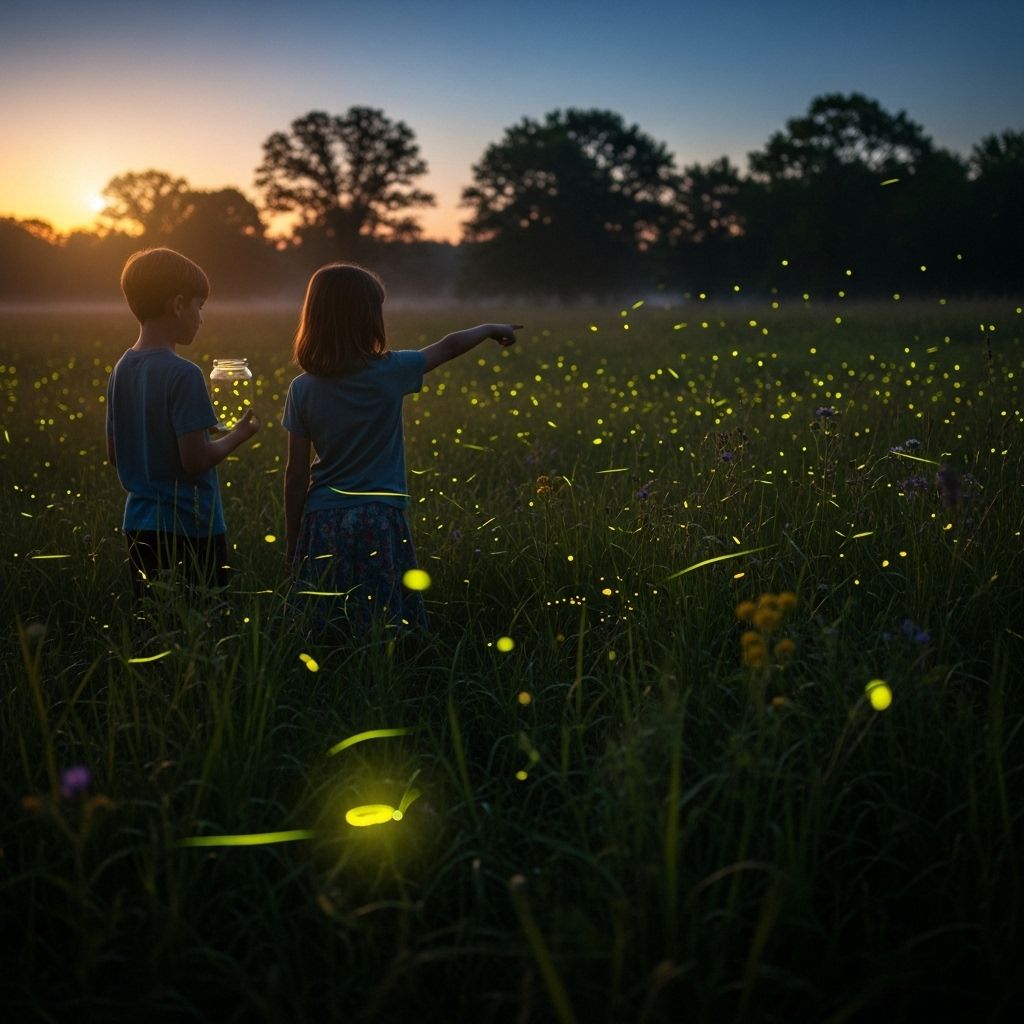How to Catch Fireflies: Complete Summer Guide for Families
Gentle nets and breathable containers protect glowing beetles and preserve their glow.

There’s something undeniably magical about summer evenings filled with the gentle glow of fireflies dancing through the warm air. These enchanting insects, also known as lightning bugs, have captivated children and adults alike for generations, creating cherished memories of warm summer nights spent chasing their flickering lights across lawns and meadows.
Catching fireflies is more than just a childhood pastime—it’s an opportunity to connect with nature, teach children about insects, and create lasting family memories. However, doing it correctly requires understanding proper techniques, having the right equipment, and most importantly, practicing ethical catching methods that ensure these delicate creatures remain safe and healthy.
Understanding Fireflies and Their Behavior
Before embarking on your firefly-catching adventure, it’s essential to understand what makes these insects so special. Fireflies are actually beetles, not flies, and they produce their characteristic light through a chemical reaction called bioluminescence. This natural light serves as their primary means of communication, particularly during mating season which typically occurs during the warmer months.
The flashing patterns you observe aren’t random—each species has its own unique rhythm and color. Some flash yellow-green, others emit orange or even blue light. Understanding this behavior helps explain why timing and technique are so crucial when attempting to catch them. Fireflies are most active during twilight hours, roughly 30 minutes after sunset, when the air is warm and humidity levels are optimal.
Essential Equipment for Firefly Catching
Success in catching fireflies begins with having the proper equipment. While the activity might seem simple, the right tools make all the difference in ensuring both your success and the fireflies’ wellbeing.
The Perfect Net
A butterfly net is absolutely essential for safe firefly catching. Choose a net with fine mesh that won’t damage delicate wings, and ensure the rim is wide enough to provide a reasonable catching area while remaining lightweight for easy maneuvering. The handle should be long enough to provide good reach without being so long that it becomes unwieldy for children.
Proper Container Selection
The classic mason jar remains the gold standard for firefly containers, and for good reason. Glass jars provide excellent visibility while being sturdy enough to handle excited children. However, proper preparation is crucial. The lid must be punctured with multiple holes to ensure adequate ventilation—without proper airflow, fireflies will quickly suffocate.
Some families prefer plastic containers with snap-on lids that are easier to puncture, but ensure the plastic is clear enough for optimal viewing. Whatever container you choose, it should be large enough to give the fireflies space to move around comfortably.
Creating the Ideal Environment
Once you have your container ready, creating the right internal environment is crucial for keeping fireflies comfortable during their brief captivity.
Humidity Control
Fireflies require humid conditions to survive, as they can quickly dehydrate if the air is too dry. Place a moistened paper towel or, even better, a damp unbleached coffee filter inside the jar. The coffee filter is preferable because it doesn’t contain the chemicals often found in processed paper towels. Crumple the damp material to create hiding spots where fireflies can rest comfortably.
Some experts recommend adding a thin slice of fresh apple to the container. Not only does the apple provide moisture, but fireflies will actually drink the juice, helping them stay hydrated longer. Grapes and raspberries work similarly, though they spoil more quickly than apple slices.
Maintaining Air Quality
Remember to change out the damp paper or coffee filter every 2-3 days if you’re observing fireflies for extended periods. This prevents bacterial growth and mold formation, which could harm the insects. However, the goal should always be short-term observation followed by prompt release.
References
- https://www.firefly.org/how-to-catch-fireflies.html
- https://www.learnersandmakers.com/catching-fireflies-its-what-summer-in-the-south-is-all-about/
- https://www.fatherly.com/life/how-to-find-and-catch-fireflies-according-to-a-firefly-expert
- https://www.countryliving.com/life/kids-pets/a64828232/how-to-catch-fireflies-summer/
- https://gardenforwildlife.com/blogs/learning-center/how-to-attract-fireflies-build-habitat
- https://chrissydonadi.com/photograph-fireflies/
- https://homesteading.com/homesteaders-guide-to-catching-fireflies-in-mason-jars/
Read full bio of Sneha Tete












